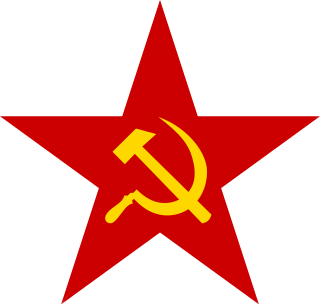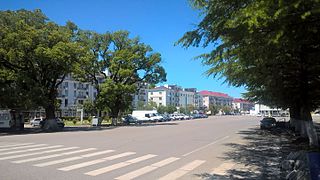| 296th Rifle Division | |
|---|---|
| Active |
|
| Country | Soviet Union |
| Branch | Red Army |
| Type | Rifle division |
| Engagements | World War II |
| Commanders | |
| Notable commanders | Alexander Ryzhov |
The 296th Rifle Division (Russian : 296-я стрелковая дивизия) was an infantry division of the Soviet Union's Red Army during World War II, formed twice. Its first formation was formed in the summer of 1941 and destroyed during Case Blue, the German summer offensive in the North Caucasus, in 1942. Reformed in the summer of 1943 in Georgia, the division's second formation never saw combat and was disbanded in 1946.

Russian is an East Slavic language, which is official in the Russian Federation, Belarus, Kazakhstan and Kyrgyzstan, as well as being widely used throughout Eastern Europe, the Baltic states, the Caucasus and Central Asia. It was the de facto language of the Soviet Union until its dissolution on 25 December 1991. Although, nowadays, nearly three decades after the breakup of the Soviet Union, Russian is used in official capacity or in public life in all the post-Soviet nation-states, as well as in Israel and Mongolia, the rise of state-specific varieties of this language tends to be strongly denied in Russia, in line with the Russian World ideology.

The Soviet Union, officially the Union of Soviet Socialist Republics (USSR), was a socialist state in Eurasia that existed from 30 December 1922 to 26 December 1991. Nominally a union of multiple national Soviet republics, its government and economy were highly centralized. The country was a one-party state, governed by the Communist Party with Moscow as its capital in its largest republic, the Russian Soviet Federative Socialist Republic. Other major urban centres were Leningrad, Kiev, Minsk, Alma-Ata, and Novosibirsk.

The Workers' and Peasants' Red Army, frequently shortened to Red Army was the army and the air force of the Russian Soviet Federative Socialist Republic, and, after 1922, the Union of Soviet Socialist Republics. The army was established immediately after the 1917 October Revolution. The Bolsheviks raised an army to oppose the military confederations of their adversaries during the Russian Civil War. Beginning in February 1946, the Red Army, along with the Soviet Navy, embodied the main component of the Soviet Armed Forces; taking the official name of "Soviet Army", until its dissolution in December 1991.




